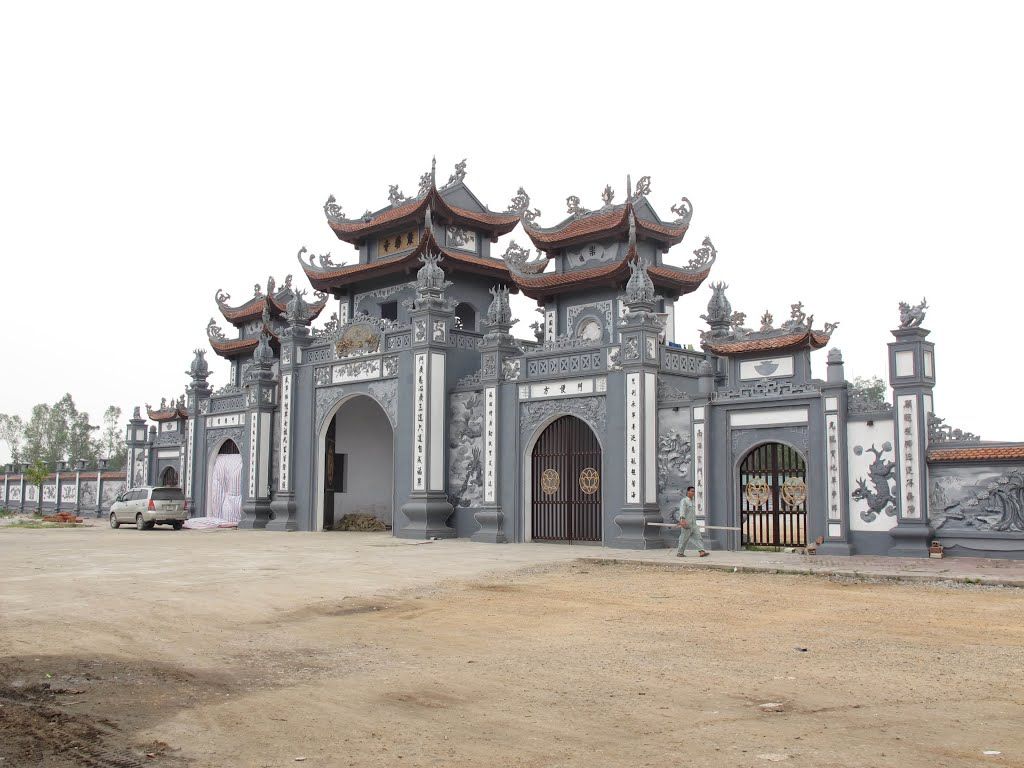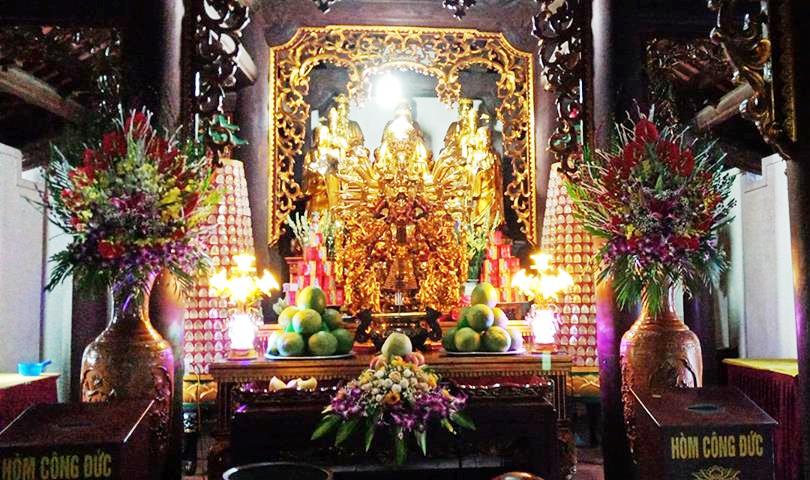Trinh Pagoda
Chùa Trình is a traditional spiritual site located in Hạ Long City, Quảng Ninh Province. Unlike a typical pagoda, Chùa Trình serves as a ceremonial place where locals perform important annual rituals, especially those related to agriculture, fishing, and weather, reflecting the deep connection between the community and nature.
1. Historical Background
Chùa Trình has been part of the local cultural and spiritual life for centuries. The name “Trình” means “presentation” or “offering,” referring to the ceremonies where villagers present offerings to deities and spirits at the start of the new year. These rituals are believed to bring good fortune, favorable weather, and protection for fishermen and farmers throughout the year.
2. Architecture and Design
Chùa Trình is not a large or ornate pagoda but a modest, open-air site that includes:
-
A small altar or pavilion where offerings such as food, flowers, and incense are placed.
-
Simple stone or wooden structures to mark the sacred space.
-
Surrounding areas often include natural elements like trees and water, symbolizing harmony with nature.
The design focuses on functionality for community rituals rather than elaborate decoration.
3. Cultural and Spiritual Significance
Chùa Trình is central to many community festivals and ceremonies, particularly:
-
The Lunar New Year’s “Lễ trình” ceremony, where villagers pray for peace, bountiful harvests, and calm seas.
-
Rituals to honor local gods, ancestors, and natural spirits believed to influence weather and fishing success.
-
A place for collective expression of gratitude and hope.
It reflects the syncretism of Vietnamese folk religion, combining Buddhist, Taoist, and animist beliefs.
4. Annual Rituals and Festivals
The most important event at Chùa Trình is held early in the Lunar New Year, usually in the first lunar month:
-
Villagers gather to make offerings of rice, fruits, tea, and other traditional foods.
-
Performances and traditional music accompany the ceremonies.
-
Local fishermen often seek blessings for safe voyages and plentiful catches.
These rituals strengthen community bonds and preserve cultural heritage.
5. How to Visit
-
Location: Various sites called “Chùa Trình” exist around Hạ Long and neighboring coastal areas; one well-known site is near the fishing villages of Hạ Long City.
-
Access: Easily accessible by local roads; often visited during festival days or special ceremonies.
-
Opening hours: Open year-round; busiest during Lunar New Year and local festival days.
-
Entrance fee: Free; visitors are welcome to observe respectfully.
-
Tips:
-
Visit during festivals for a full experience
-
Dress respectfully and avoid loud noises
-
Ask locals for guidance on the best times to visit
-
6. Conclusion
Chùa Trình plays a unique and vital role in the spiritual and cultural life of Hạ Long’s coastal communities. It is not just a place of worship but a vibrant center for traditional rituals that connect people with their environment and heritage. For visitors interested in authentic cultural experiences, attending a ceremony at Chùa Trình offers a meaningful glimpse into Vietnam’s rich folk traditions.



